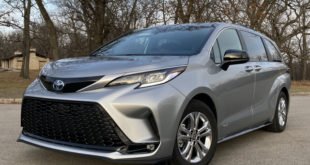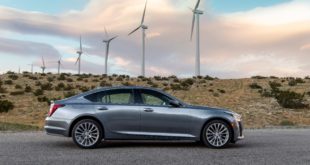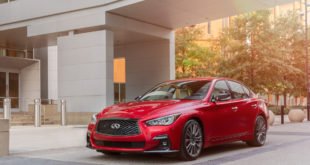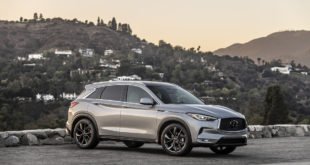By Brian Wong
The Hyundai Elantra compact sedan has traditionally stood out for its value and not much else. Previous generations of the car were among the most understated vehicles on the road, devoid of style or clear identifying details. I tried to picture an Elantra from before 2010 and I drew a big blank, but to my surprise the car has been around for almost 30 years.
But the redesigned 2021 Elantra is anything but anonymous, with a flashy new bod and cutting-edge technology that stands out in a competitive but diminishing field. Along with that, the seventh generation Elantra maintains its excellent value proposition. On top of the expanded set of features, there is improved fuel economy (with and without the hybrid model), and that killer 10-year/100,000-mile powertrain warranty and 3-year/36,000-mile complimentary maintenance.
On paper (and in pictures), the redesigned Elantra appears formidable. But after traversing all over Hollywood and Los Angeles, some cracks in the facade started to show
A more pointed approach
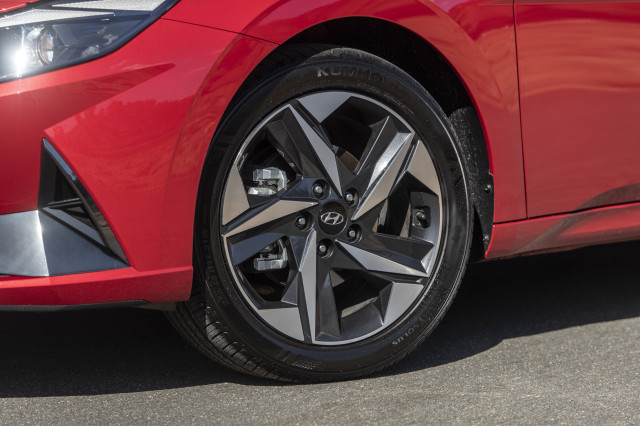
2021 Hyundai Elantra
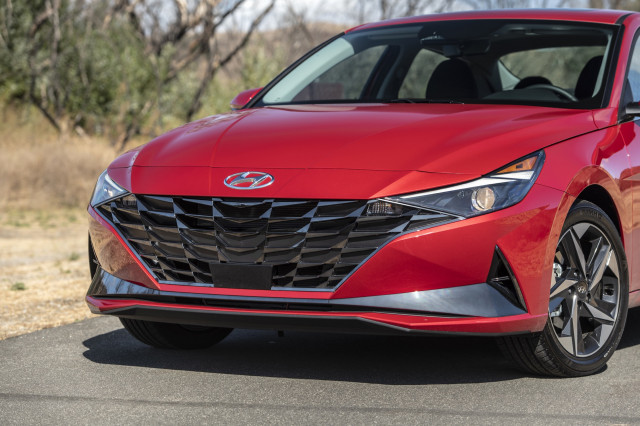
2021 Hyundai Elantra
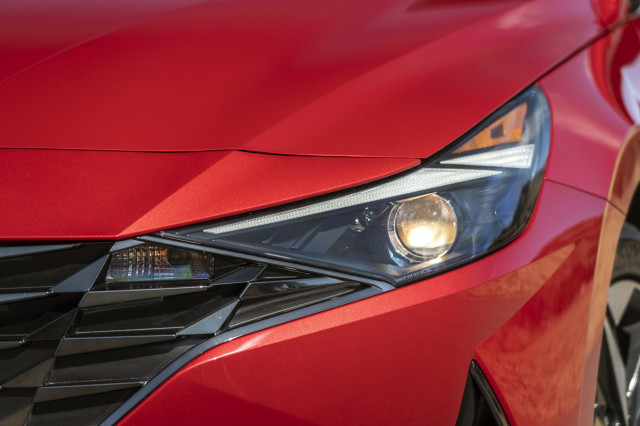
2021 Hyundai Elantra
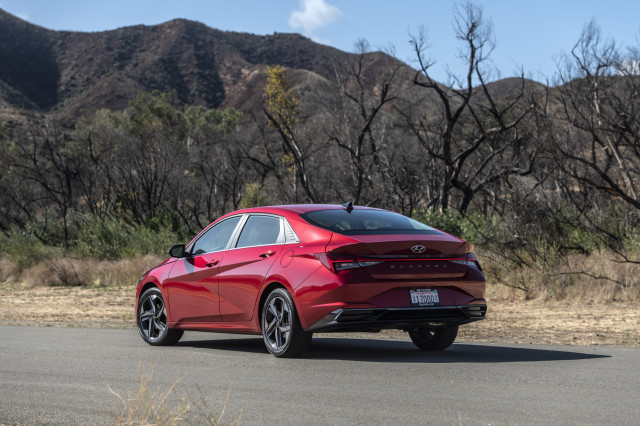
2021 Hyundai Elantra
The new Elantra’s sleekness is aided by its new dimensions. It is 2.2 inches long, an inch wider, and an inch shorter.Though its vaguely coupe-ish shape isn’t unique in this class (looking at you, Honda Civic hatch), it does an excellent job of standing out thanks to its sharp angles. The front has a large geometric grille and the rear cuts in sharply below the decklid. A severe kink on the Elantra’s sides stands out in person as much as it does in photographs, unless you go for black paint that turns the Elantra into incognito mode.
Most of these styling choices work for me, except the rear. From certain angles it looks like someone got really mad and punched in the trunk. But if Hyundai’s goal was to make the car noticeable, this works.
Stuck in neutral
Gas models of the non N-line variety get the same 147-horsepower, 2.0-liter inline-4 as the outgoing model. All Elantra models remain front-wheel drive only and the inline-4 is mated to a continuously variable automatic transmission. Hyundai calls it an “intelligent variable transmission” to differentiate it from other CVTs, but unfortunately it recalls those other, inferior CVTs.
The Elantra’s off-the-line performance leaves much to be desired due to the lazy transmission. Even in its more aggressive “S” driving mode the Elantra lags until it seems to wake up around 10 mph and then it finally shows some pep in its step. The transmission will approximate gear shifts and you can even change your own “gears” via the transmission stalk, but it’s slow to respond and unpredictable even if you try to take control yourself. Passing maneuvers are better than launches, but the performance is still far from ideal with a noticeable pause after hitting the gas pedal hard.
That’s a shame because the suspension and steering are pretty good. Hyundai’s dynamic improvements as a brand come to bear on the Elantra for the better. It’s not quite as fun or spritely as the Veloster hatch, but you can feel the Veloster’s nature come out on the right road. Turn-in is sharp and though there’s some vagueness at the limits of the car’s grip, it’s still a fun steer as long as the hill is pointing down and you’re not dependent on that powertrain to maintain speed.
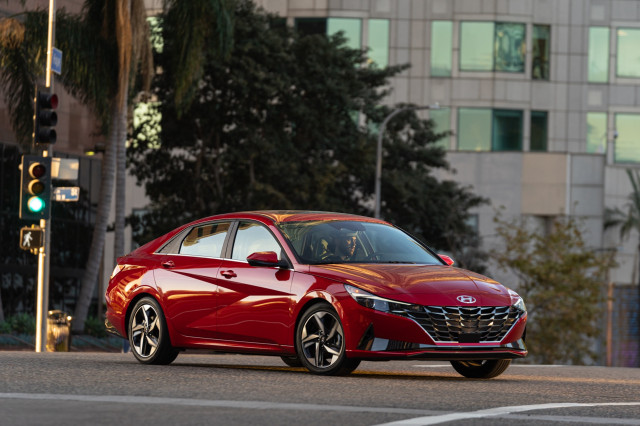
2021 Hyundai Elantra
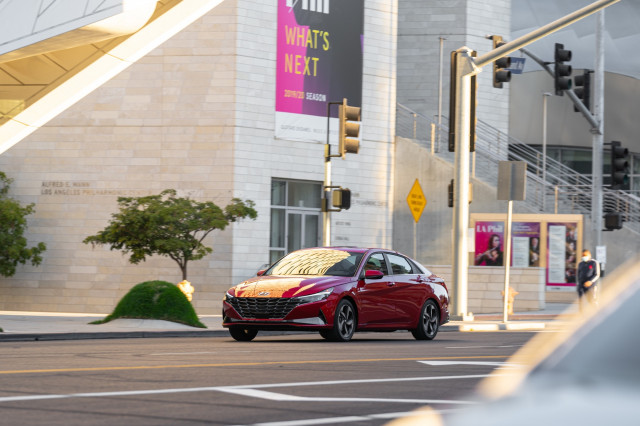
2021 Hyundai Elantra

2021 Hyundai Elantra
Fuel economy figures have improved to an EPA-rated 33 mpg city, 43 highway, 37 combined for SE models and 31/41/35 mpg for the SEL and Limited, a gain of 2 combined mpg over last year’s model.
I also tested out the Elantra Hybrid on this drive and it’s the one I’d choose. It’s slightly down on power (139 total hp vs 147), but the slight boost you get from the electric motor makes it feel a little more responsive and it also has a 6-speed dual-clutch automatic that feels more natural. The Elantra Hybrid also has a more advanced multi-link rear suspension rather than the torsion beam setup found in the gas Elantra, and it makes the rear end feel more planted in curves. It’s both funner and offers a significant fuel economy advantage (54 combined mpg for SEL and 50 mpg for the Limited), tilting the scales in the hybrid’s favor.
A large, mixed up interior
The Elantra takes many of the features found on larger, more expensive Hyundai vehicles and brings them down to a smaller vehicle and a lower price point. Few of the features themselves are new—the optional 10.3-inch multimedia touchscreen comes down from the 2021 Sonata mid-size sedan and 2021 Palisade three-row SUV, for example. But the Elantra is the first car in its class to offer high-end features such as a 10.3-inch digital gauge cluster and wireless Android Auto and Apple CarPlay.
I did not get to test the wireless connectivity features because I was in a top-of-the-line Limited model. In a strange twist, if you want wireless Apple CarPlay and Android Auto then you’ll have to go with the smaller 8.0-inch touchscreen found on SE and SEL models. Yes, that means opting for the most expensive trim with the larger touchscreen locks you out from these features. It makes no damn sense.
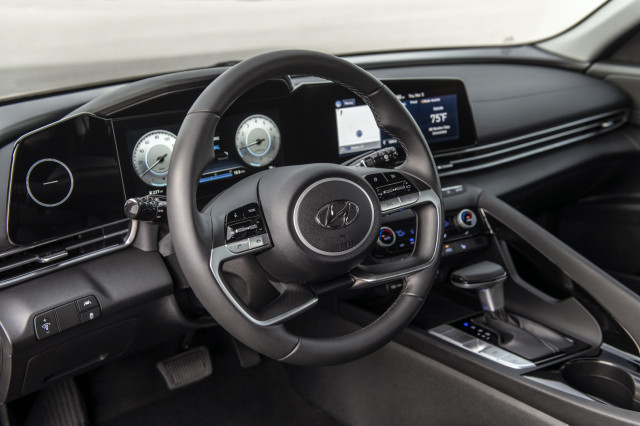
2021 Hyundai Elantra
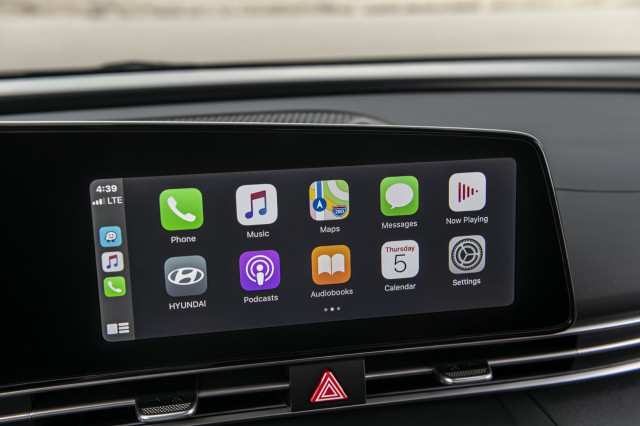
2021 Hyundai Elantra
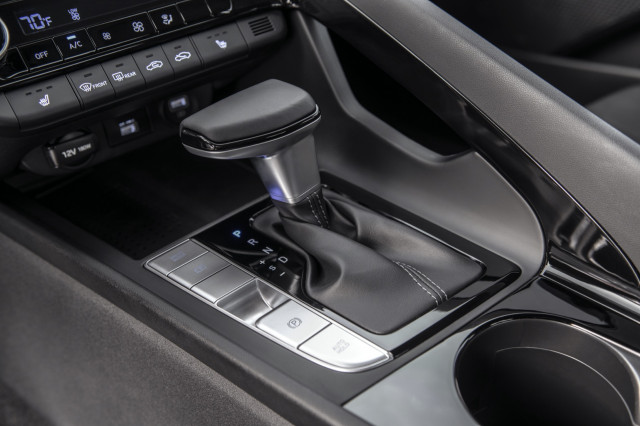
2021 Hyundai Elantra
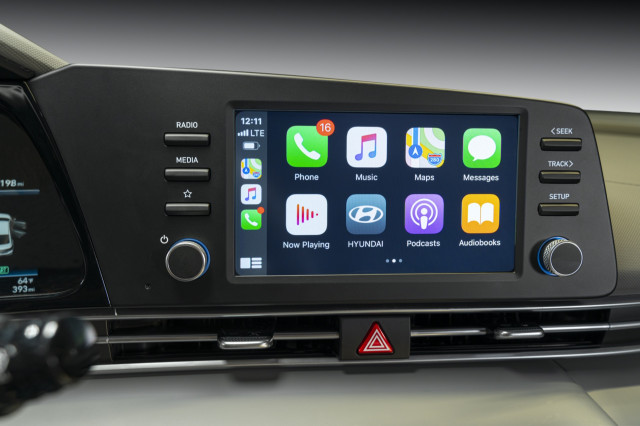
2021 Hyundai Elantra
Another bit of annoyance as an Android user: Android Auto does not make use of the whole screen. A black box on the right takes up about a third of the screen to display the Android Auto logo, weather information, compass, or a clock. It can’t be changed, and it looks cramped. I’d rather use that real estate for Google Maps or navigation.
The Elantra’s driver-oriented dashboard brings the large touchscreen closer to the driver and makes it easier to reach. But that makes it harder for the passenger to reach and see what’s going on, plus there’s a grab handle between the front seats now to further separate the front passengers. It’s not as pronounced as the Corvette C8, where the barrier feels like you’re sitting in separate booths at a restaurant, but the front space does feel less inviting for the non-driver.
Interior room overall is still a big plus for the Elantra; at 5-foot-11, I can sit comfortably in the backseat. Though roomy, it is missing amenities—no USB charging ports or air vents make their way rearwards. Headroom is still ample even though the Elantra’s overall height has been reduced by an inch, but the cut of the roof and the large C-pillar negatively impacts rear vision.
Value still intact
The compact sedan’s very strong value proposition remains not only intact, but strengthened I would argue compared to the previous generation. The amount of equipment you get for the money is really appealing at all three trim levels and it is a stylish package inside and out, even if it’s not a great driver’s car.
Those positives are enough for even someone like me who prizes driveability to give the Elantra heavy consideration in this segment. Its safety and technology offerings (wireless quirk aside) lead the class, and that sort of future-proofing will help the car age more gracefully as the competition catches up. The car’s body work suggests more aggressive intent but once you get past the surface, the Elantra’s emphasis on its past strengths are what really drives it.
The 2021 Elantra will arrive at dealers in December 2020.
Hyundai provided two Elantras and lodging to bring you this firsthand report.
